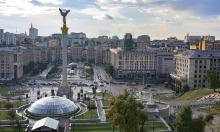Russian-Korean archaeological expedition ends excavations
A joint Russo-Korean archaeological expedition concluded its work on Wednesday. Over the past three years its members were excavating ancient monuments of culture on Suchu island in the lower reaches of the Amur River (Far East), said Vitaly Medvedev, Doctor of Historical Sciences, head of the Russian part of the expedition.
A special place among the archaeological monuments of the Russian Far East, as well as of East Asia as a whole, belongs to the monuments on Suchu islands where Neolithic and later settlements have been unearthed," said Vitaly Medvedev.
Back in 1935, Soviet academician Alexei Okladnikov examined that territory and found there about 200 monuments, including ancient settlements and petroglyphs dating back to different epochs.
In 1999, scientists of the South Korean State Research Institute proposed to the institute of archaeology and ethnography of the Siberian branch of the Russian Academy of Sciences that they carry out a cycle of excavations on the Suchu island.
During the excavations that were held during the past three summer seasons, a lot of material was found that is valuable for the studies of the Neolithic period of North-East Asia. A number of the finds are unique both for the archaeological studies of the Far East and beyond its limits.
The material of the first two years of work served as the basis for monographs that were published in Seoul in Russian and in Korean with a great number of colour illustrations and diagrams. "The South Korean archaeologists suggested that joint excavations be continued next year," said Vitaly Medvedev, "this time in southern Maritime Territory."
Subscribe to Pravda.Ru Telegram channel, Facebook, RSS!





